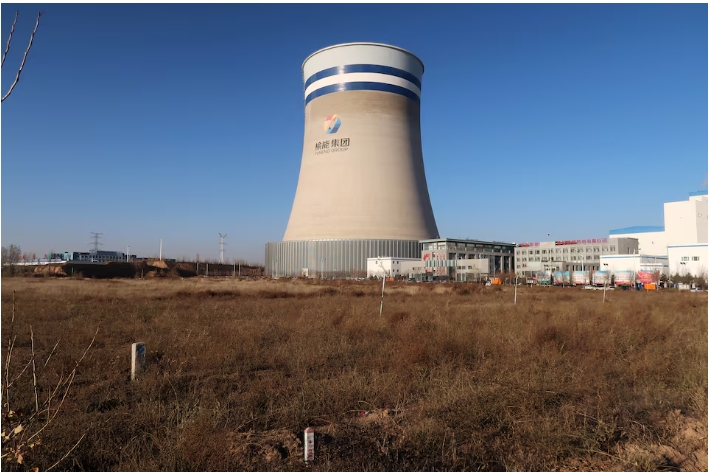
China, the world's biggest coal producer and importer, saw arrivals of seaborne thermal coal of 29.7 million metric tons in March, according to data compiled by commodity analysts Kpler.
This was up from 23.03 million tons in February and was also higher than the 28.62 million in March 2023.
For the first quarter, China's seaborne imports of the grade of coal used mainly to generate electricity were 80.64 million tons, up 17.2% from the 68.82 million recorded in the same period in 2023.
The strength in China's imports is being driven by a combination of strong growth in power demand and by seaborne prices being competitive with domestic coal.
Official data showed China's power consumption was 11% higher in January and February this year compared to the same months in 2023, and power generation rose 6.9% in 2023, outpacing the 5.2% growth rate for the economy as a whole.
China's electricity demand is being boosted by a variety of factors, including increasing electrification of the vehicle fleet, higher demand from air conditioners and appliances, and increased electrification of industrial processes, such as some types of smelting.
A drop in hydropower output amid drought has also boosted fossil fuel generation, predominantly coal-fired, further lifting demand for the fuel.
China's domestic coal prices have also remained relatively high with thermal coal at Qinhuangdao ending at 825 yuan ($114) a ton on Monday.
While this is down from a recent peak of 940 yuan on Feb. 27, the prices of seaborne grades popular in China have also been declining.
Australian coal with an energy content of 5,500 kilocalories per kilogram (kcal/kg) , as assessed by commodity price reporting agency Argus, slipped to $87.37 a ton in the week to March 28, down from the recent high of $96.66 in the seven days to March 1.
Indonesian coal with an energy content of 4,200 kcal/kg ended last week at $55.70 a ton, down from the recent high of $58.17 from the week to March 8.
Even allowing for freight costs, Chinese import duties and differences in energy content, imported seaborne grades are currently slightly cheaper than domestic supplies, especially for utilities in China's southeast.
The competitiveness of seaborne grades can be seen in China's imports, with arrivals of 20.24 million tons of Indonesian thermal coal in March, up from 16.96 million in February.
Imports of Australian thermal coal hit a three-month high of 5.08 million tons in March, up from 3.45 million in February.
 China, India seaborne thermal coal imports vs Indonesia price
China, India seaborne thermal coal imports vs Indonesia price China, India seaborne thermal coal imports vs Indonesia price
INDIA STRENGTH
It's a similar story for India, where robust growth in power demand is fuelling coal imports, which reached 15.21 million tons in March, up from 14.09 million in February and 13.41 million in March 2023, according to Kpler.
First quarter thermal coal imports were 42.79 million tons, up 23.8% from the 34.57 million in the same period a year earlier.
Coal demand is likely to remain elevated in India as the South Asian nation braces for more heatwave days than normal between April and June.
In the second quarter, various parts of the country could record 10 to 20 heatwave days compared to the normal four to eight days, Mrutyunjay Mohapatra, director-general of the India Meteorological Department, told a virtual news conference on Monday.
India's top supplier of seaborne thermal coal is Indonesia with March arrivals of 10.23 million tons being the highest in four months.
Australia isn't a major supplier of thermal coal to India, with most of the coal trade between the two countries being metallurgical coal, which is used to make steel.
However, it's worth noting that U.S. supplies to India have been increasing, with March imports at a three-month high of 1.10 million tons and an estimated 1.62 million expected to arrive in April, which would be a record high.
At the same time, India's imports of Russian thermal coal have been slipping, with March arrivals of 730,000 tons being the lowest since November.
A combination of Western sanctions on shipping and concerns over the safety of transiting the Red Sea has boosted the landed price of Russian coal in India.